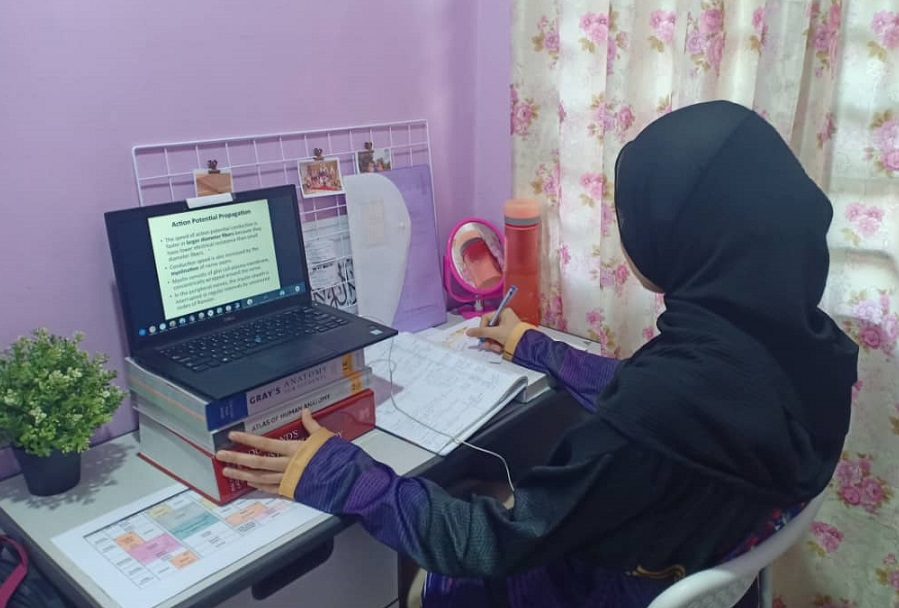Student’s understanding and overcoming their educational difficulties are the main purposes of the educational process regardless the applied techniques or strategies, whether face-to-face learning or distant learning. Using technology in the educational process is considered as an improvement to the traditional learning and provide a farther dimension to creativity and flexibility to get better results. One of the e-learning techniques that teachers prefer to use is online synchronous lecture or an asynchronous (recorded lectures, everyone chooses his own time to listen to) as an additional tool to enrich their lesson.
It comes to my mind a question after watching some prolonged online presentations that includes numerous written slides, some lasted from 40 minutes to several hours – are we ready for micro lecturing? Watching slides or video presentations may not suit our attention limits and may not be appropriate for mobile devices use.
David M. Penrose, the One Minute Professor (OMP), an independent instructional designer who is also an eLearning consultant, has articulated the process for creating micro-lectures to be more enjoyable. For this article, I don’t use micro lecture as an exact one-minute lecture, but as a short and interesting instructional content as possible, which is formatted for mobile learning. It may be a few minutes’ presentations, a short video, a poster or infographic sheet with specific points, or micro contents.
Current researches have shown that no matter what teachers do during the class, students’ concentrations on one task takes two to five minutes per year old of their age, which means that the attention span for a five years old goes around twenty-five minutes maximum, after which it will start to reduce. This is the way in face to face classroom (F2F), which is different compared with distant learning, although the current studies indicate that a majority of students prefer micro-lecture style.
Micro-lectures also encourage a self-directed model of learning, allowing students to select lessons to watch and to move through them at their own pace. Micro lectures are easy to integrate into the curriculum because they can be used in a variety of ways and are short enough to fit almost anywhere, and they offer an appealing option for mobile learning.
Flexible micro-lecture is one of the most enjoyable teaching methods for students, because of its content, design, and application. It is worth to say that it shares almost the same outcomes of the traditional learning. There are some tips that should be followed to achieve a successful micro lecture:
- Understand the online learning concept. First of all, we need to realize that online learning is not the easiest way to teach, but a favorite way for students, because most of them are masters in using ICT, that’s why teacher should understand that students learn and manufacture their learning at the same time so online learning is what they do not what teacher give.
- Micro Contents. Information-rich micro-content can be extremely persuasive, especially in the digital space where students can create their own learning based on their own style. Micro-contents, presented at the right time can leave lasting positive impressions (micro contents, huge achievements).
- Time Management. Online learning certainly needs a lot of flexibility in terms of when you want to practice your study, but that doesn’t mean you don’t have to study! You need to schedule time in your personal calendar to study the materials in your online course and complete assignments, without following the full online lecture because it will be boring. Current studies have shown that students do not really focus on the teacher nor the activities compared to traditional face-to-face classes.
- Flexible Task-Based Learning. One of the best ways to apply e-learning is through the micro lectures, and the best way to apply the micro lecture is to follow task-based learning and set a flexible time to send the assignment. Lecturers must understand that students have many classes and assignment to do, thus flexibility in terms of guidance and deadlines are essential.
How to Apply Micro Lecture
- List down the key point of your micro lecture. This will empower your micro lecture and make students more confident in you.
- Read and write what you are about to do in advance and prepare a 15 to 30 second introduction and summary to create an acceptable context.
- Prepare your slides, one slide for every one point which should not exceed five minutes. Use main points and highlight key words, keep the writing simple with clear explanations.
- Record micro lecture using microphone and web camera. Your voice should be clear and consistent without noises. Include a web camera to make your lectures even more credible.
- Link the students to you. When making a video, look directly into your web camera. don’t show maps or diagrams even charts because the web camera is not suitable for these documents.
- In designing an assignment, try to follow the micro lecture coordination. This assignment should be a revision to ensure that students understood the proposed topic.


